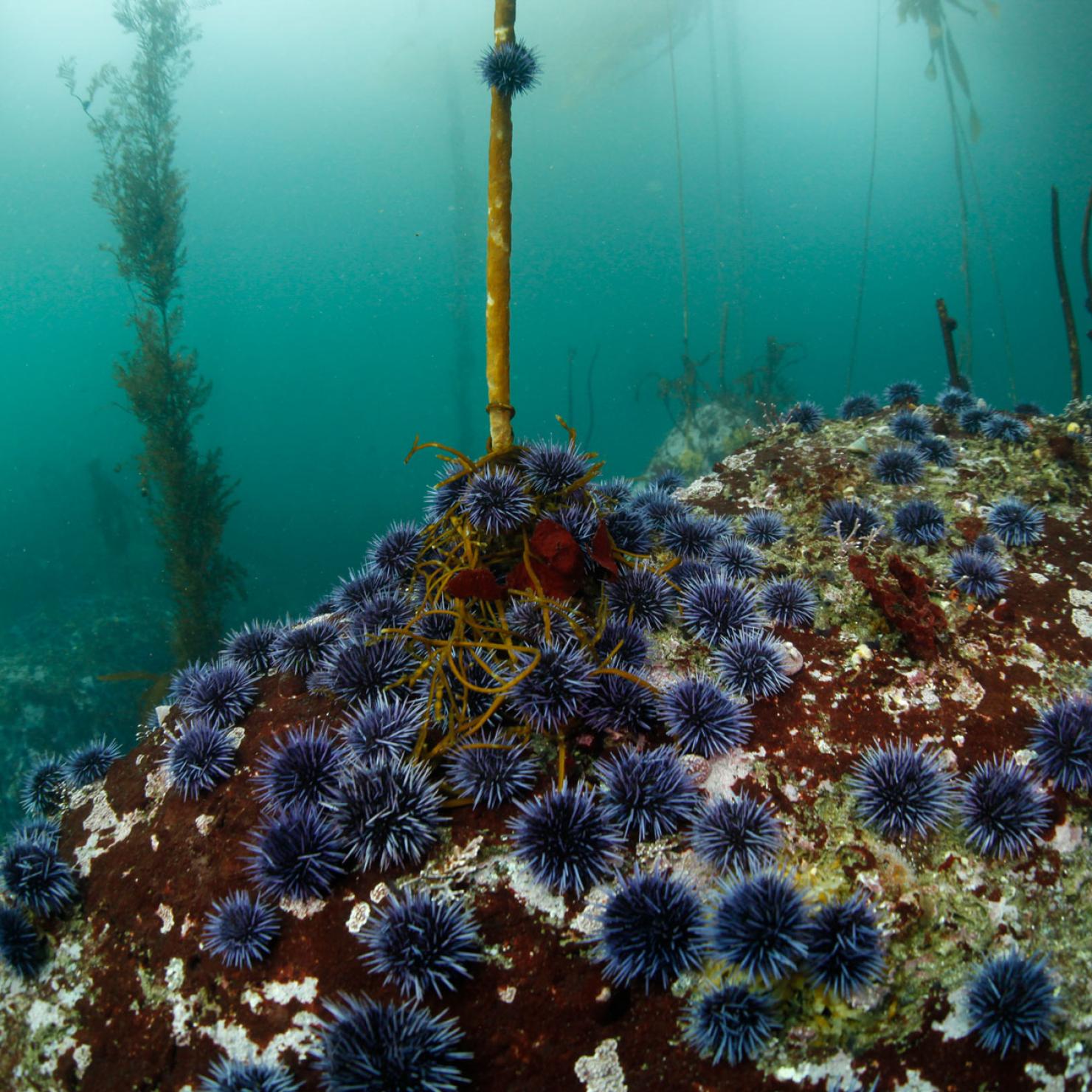Hungry Grazers of the Bull Kelp Forest
Sea urchins are part of all of the world’s kelp forests. There are around 950 species of spiny sea urchin in the class Echinoidea and they can be found in ocean waters from the edge of the tideline through the sub-tidal kelp forest zone and even deeper still. They are known as echinoderms, a phylum shared by sand dollar, star fish and thousands of other species. If you compare all three—urchin, sanddollar and sea star—you will notice their shared five-fold symmetry. The sea urchin’s beautiful, domed structure is made of calcium carbonate, but it is not a shell; it is known as the test. A sea urchin’s mouth is comprised of five radial, bony teeth in its underside that can scrape and nibble. This radially symmetrical jaw (made of calcium carbonate like the test) is called an Aristotle’s Lantern and what it likes to nibble is kelp and seaweed. Sea urchins are herbivores, like cows, but they graze, munching the primary producers of the oceans, the algae, or kelp and seaweed, as well as the residue of dead invertebrates and fish. But unlike cows, in a healthy, balanced kelp forest the urchins don’t have to move very much.








